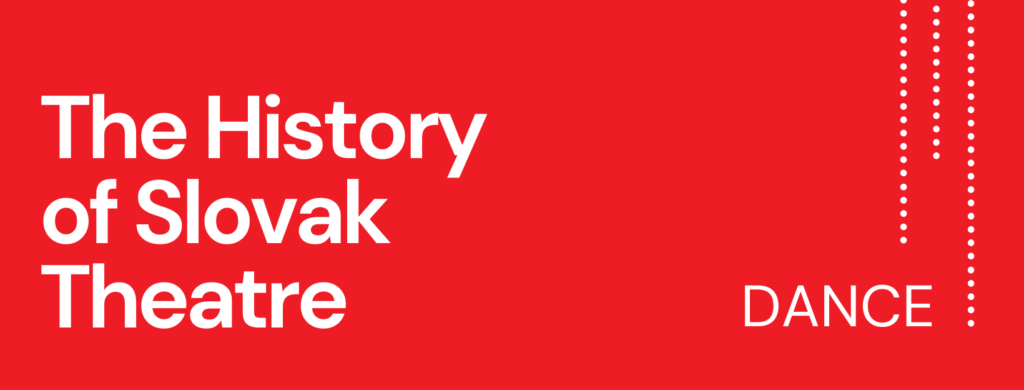
The History of Slovak Theatre – 10. Dance
Petipa and Fokin Lines on Ballet Stages
Over the one hundred years of its professional journey, the art of dance in Slovakia has evolved to the European level. Dancers of all styles are working on prominent world stages, in renown ensembles, founding dance schools and dance troops all over the world, chereegraphing inspiring pieces that attract attention of not only the audiences, but also the professional critics. Whether we are talking about ballet artists, contemporary dancers and dance creators, performers, or scenic folklore and modern dancers, they all hold up to the international competition and bring new stimuli into the development of the art of dance.
The first ballet premiere in the Slovak National Theatre was Léo Delibes’ ballet Coppélia (premiered on 19 May 1920), featuring young Slovak dance talents in addition to the German and Czech dancers. The development of dance education caused a boom in the Slovak dance arts and our artists were able to master the Petipa’s line of ballet repertoire quickly and fully. Principal creative personalities of the Slovak ballet of the past were Jozef Zajko, Stanislav Remar, Andrej and Marilena Halász, Karol Tóth, Jozef Dolinský Sr. and Boris Slovák. The art management of the ballet companies supported the artistic efforts applying progressive Fekin’s choreography style synthesizing neoclassical influences. Similarly, vigorous support was given to the advancement of the original ballet works that developed in cooperation with prominent personalities in the art of music and choreography (Karol Tóth, Libor Vaculík, Ondrej Šoth, Igor Holováč, Natália Horečná, Mário Radačovský and Ján Ďurovčík).
The history of Slovak ballet art is made of distinctive generations of choreographers and dance performers. The founding generation included personalities such as Ella Fuchsová-Lehotská, Gusta Herényiová, Florentína Lojeková, Peter Martin Rapoš, Ján Haľama, Žofia Tóthová, Zoltán Nagy, Miklós Vojtek, Gabriela Záhradníková and many others. The development of the art of dance can be credited to the founding generation of teachers such as Eva Jaczová, Zlatuška Vincentová, Peter M. Rapoš, Oľga Markovičová and a great number of their followers.
Modern and Contemporary Dance
In the first half of the 20th century, the art of dance in England, the United States and Germany was significantly influenced by the Bratislava native, dance reformer and choreographer Rudolf von Laban. As the author of Labanotation – the dance recording and movement analysis, he was interested in the relationship between the human body and its surrounding space. This thesis became one of the main topics for the contemporary dance a few decades later.
Contemporary dance as it is known today has developed from the interpretive and creative potential of the Slovak amateur modern dance companies, which started to boom in the 1970s. These companies demonstrate sensitivity by reacting to the contemporary social and societal impulses through their projects, often bringing daring productions with engaging motifs to the stage. The nature of their creations supports tolerance and basic cultural values. Their creative approach varies: from the conceptual intellectual projects through acrobatic performances to multi-media fusions of art forms and new technologies in the dance performances.
An umbrella organization for a part of the independent contemporary dance scene in Slovakia is the Contemporary Dance Platform (PlaST). The only company with a permanent stage is the Dance Studio Theatre in Banská Bystrica. Other companies perform as guests in cultural centres and theatres across Slovakia, and a large segment of the artists who became established internationally participate in international co-production projects.
Folklore Dance
In Slovakia, the professional folklore dance has been developing continuously, building on the elements of folklore expression. It transforms to a progressive stage form close to dance theatre and thus creates an
original scenic dance form rich in rhythmic nuances and a variety of folklore steps and movement bonds. The prominent representatives of the Slovak scenic folklore dance are companies SĽUK and Lúčnica.
This is an online version of exhibition theatre.sk.



